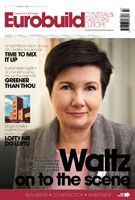Her political opponents call her the queen of traffic jams, while they refer to the city budget she has drafted as ‘a road engineer’s budget’. Warsaw mayor Hanna Gronkiewicz-Waltz’s main belief is that traffic in the city needs to move more efficiently in order to allow the city to growEmil Górecki, ‘Eurobuild CEE’: Over the past few years many new ideas to develop the very centre of Warsaw – pl. Defilad – have emerged. And the subject has been revisited again over the past few weeks, with new concepts being proposed. So, when will the capital have a city centre worthy of a modern European city? Hanna Gronkiewicz-Waltz, Mayor of Warsaw: We want to approve a new local development plan as soon as possible, which I expect to happen in the first half of 2009. We are discussing with architects its future shape and are considering options for how pl. Defilad could be built with Bartłomiej Biełyszew and Andrzej Skopiński. We have agreed tha






























































